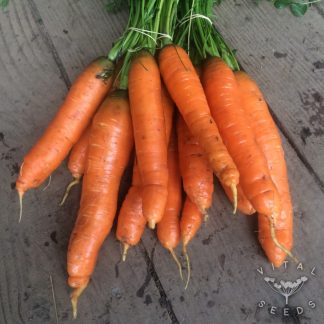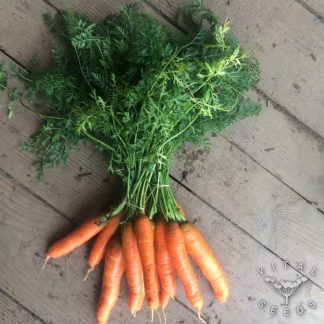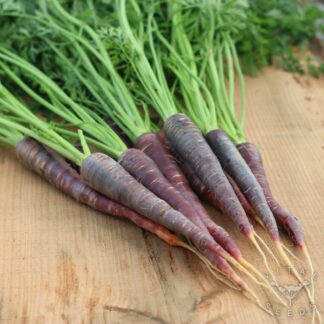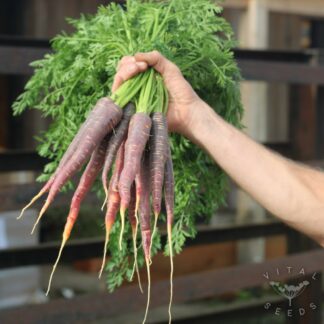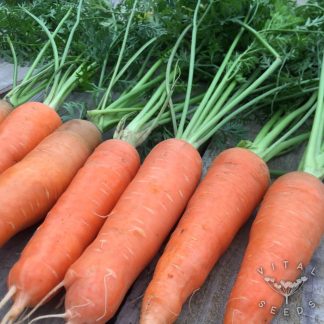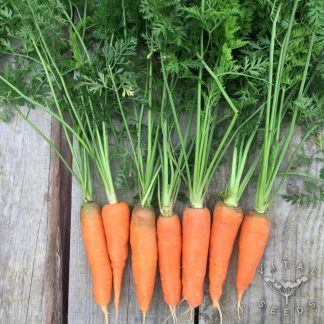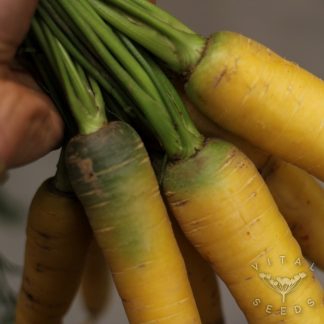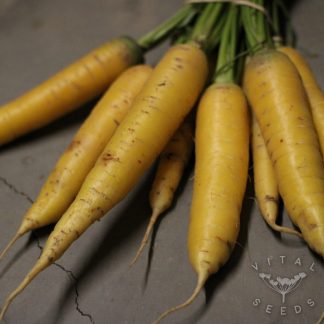How to grow carrots
Download PDFSeed Sowing
Carrots should be direct sown 1cm deep into weed-free soil with a fine tilth. Space drills 30cm apart, aiming for seeds to be spaced about 1cm apart. When plants are about 3cm tall, thin to their final spacing of 5cm apart. Top tip: mix a few quick germinating seeds like beetroot or radish with your carrots to see the rows sooner.
Water in well and cover early sowings with horticultural fleece to keep the soil warm and aid germination. Seeds should start to appear within a couple of weeks.
You can find early carrot varieties which can be sown from May onwards and maincrop later varieties which are sown in June-July and have better storage capabilities.
Plant Care
Good bed preparation is essential for growing carrots. Before sowing make sure your beds are well weeded, with any stones removed. Excess nitrogen can cause carrots to fork as they grow so make sure to only amend the soil with a light dressing of well-rotten manure or compost.
Keep newly-sown carrot beds weed free and well-watered to stop the soil from drying out.
Once your plants are established, carrots are relatively easy to look after as the foliage will grow densely and shade out any germinating weed seeds. Water occasionally, especially in dry conditions.
Challenges
Carrot root fly is a small bodied fly whose larvae feed on the roots of carrots, burrowing inside and causing them to rot. They are low flying, so can be prevented from accessing your carrot crop with a cover of horticultural mesh.
Keep an eye on any slug damage as carrots are geminating as they can be partial to a new seedling!
Aphids can be a minor pest but can be easily removed with your fingers.
Harvest
Carrots can be harvested as and when you desire, when they are about as wide as a thumb or over 1.3cm in diameter. Use a garden fork to slightly loosen the soil before pulling where foliage meets the root straight up out of the ground.
They become much sweeter after one or more frosts as the plant begins to start storing sugars in its root.
Maincrop carrots can be stored in the ground until needed but may benefit from being mulched once the foliage has begun to die back. Keep an eye out for rodent damage in the winter months. Carrots also keep well for months in boxes of moist sand or in bags in a cool, dark place. Leaving a little bit of the soil on the roots helps to them to store better too.
Seed Saving
Carrots are biennial, meaning they will flower in their second growing year. They will cross pollinate with other cultivated and wild varieties so should be kept at a safe distance, preferably with an isolation cage. They require exposure to a cold period to flower.
Dig up your chosen population at the end of their first year, storing them in a dark, humid location in layers of sand or woodchip. In the spring plant them out at slightly wider spacing and be sure to stake. You can harvest individual flowers within the umbel as they start to brown or the entire umbel head, hanging upside down in a dry location to further dry and covering the umbels with a bag to catch any seed as it ripens.
You can also rub the dried heads with your hand to remove the seeds, winnowing afterwards to remove any unwanted material.
